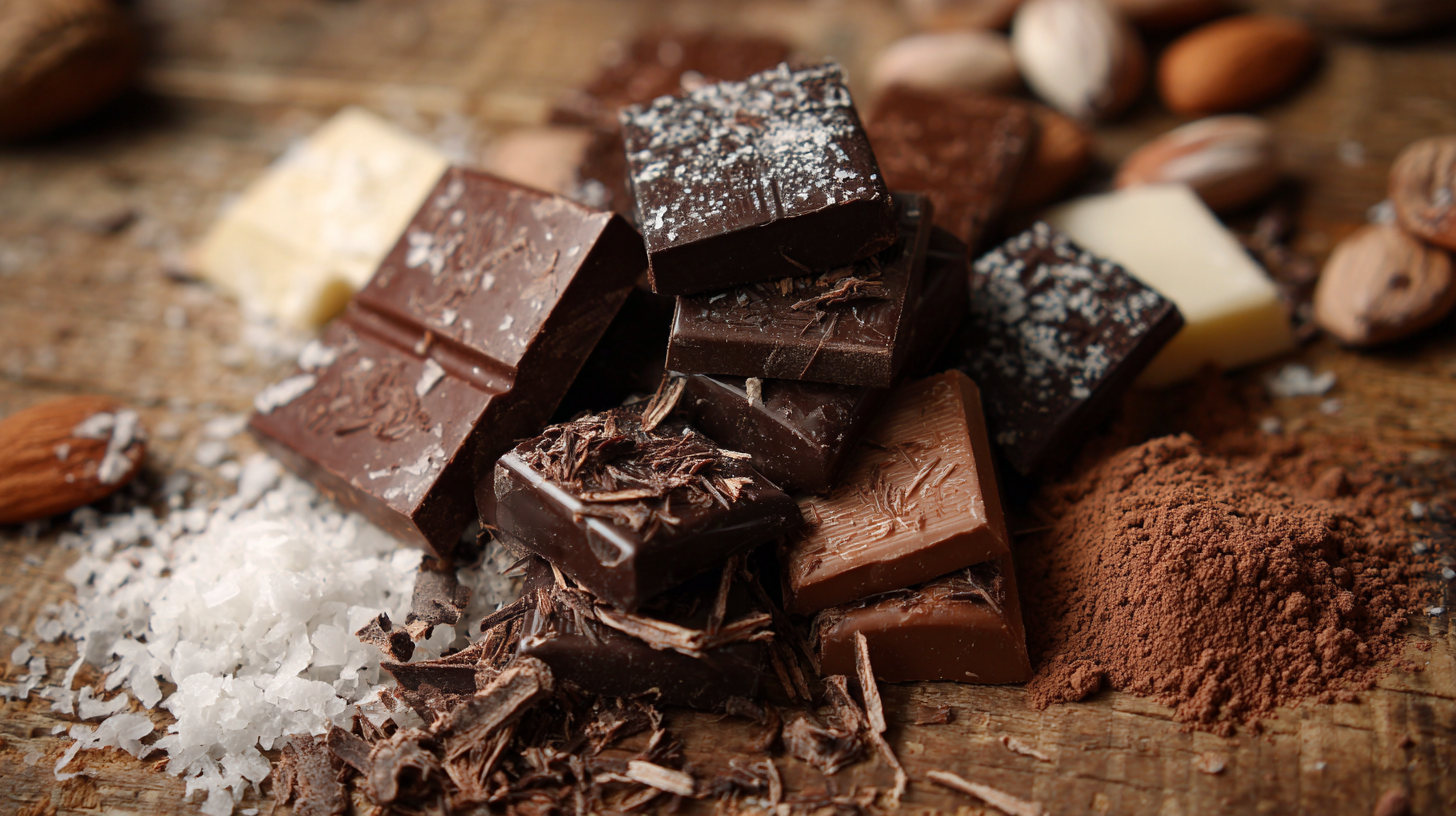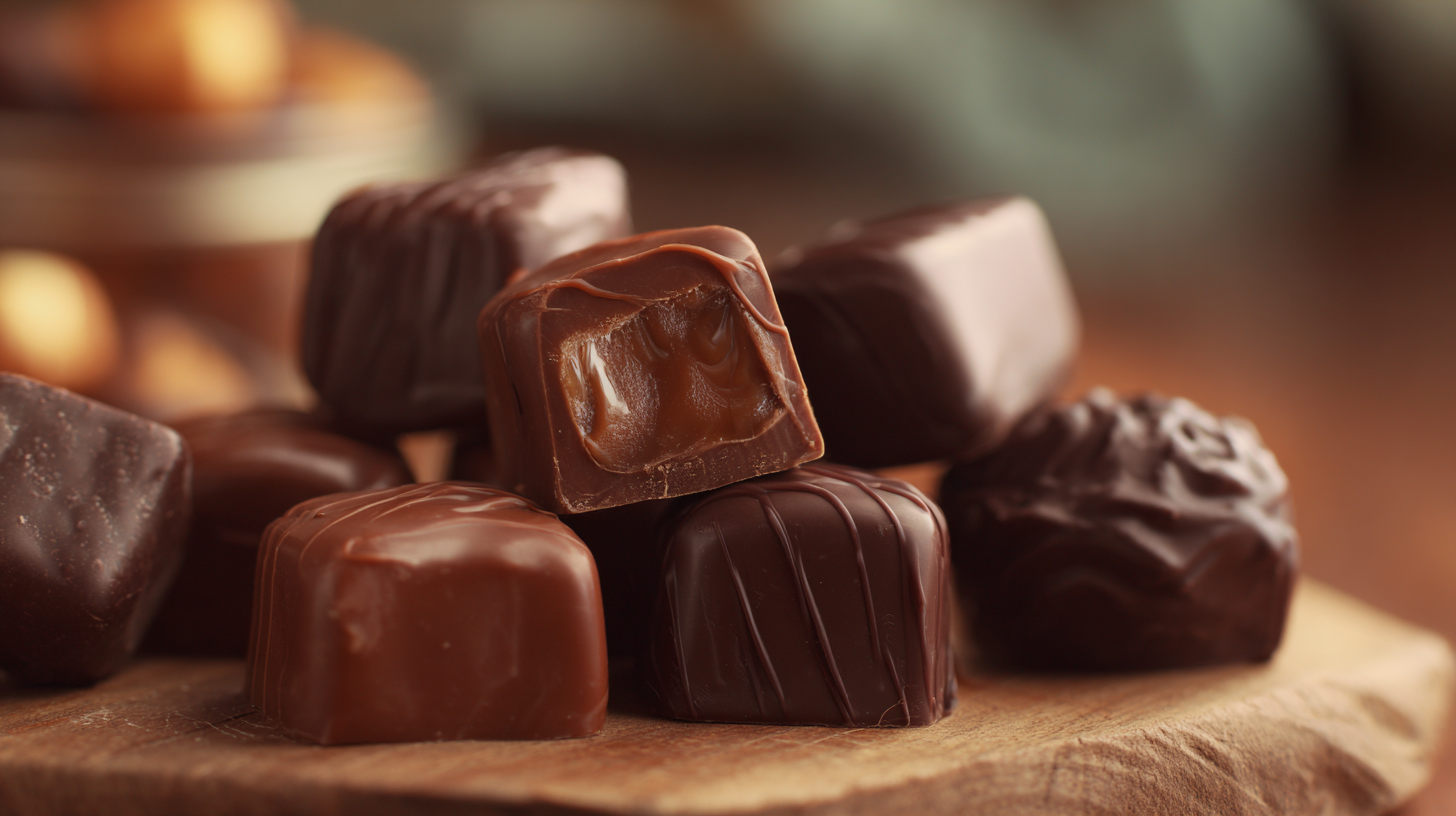In the ever-evolving confectionery industry, mastering the art of chocolate tempering is paramount for producing high-quality products. A recent report by Market Research Future projects the global chocolate market to reach USD 182 billion by 2025, with an increasing demand for artisanal and premium chocolates. This trend highlights the essential role of precision in chocolate craftsmanship, where a "temperatrice cioccolato piccola" becomes a vital tool for chocolatiers. Perfectly tempered chocolate not only enhances flavor and consistency but also ensures a glossy finish and satisfying snap that consumers crave. Moreover, research shows that proper tempering can prolong chocolate's shelf life, satisfying an increasingly discerning and health-conscious market. Thus, investing in quality small chocolate tempering equipment can significantly elevate confectionery skills and meet the demands of a dynamic market landscape.

Mastering the art of chocolate tempering is essential for any confectioner aiming to elevate their creations to professional levels. Properly tempered chocolate boasts a glossy sheen and a satisfying snap, making it not only visually appealing but also enhancing the overall mouthfeel. To achieve this, understanding the optimal temperatures for different types of chocolate is crucial. Each chocolate variety has its own ideal melting and cooling points, which, when adhered to, allow for perfect crystallization of cocoa butter. This results in a stable structure that holds up under various conditions.
Utilizing small chocolate temperatures effectively also opens up possibilities for innovative techniques, such as creating intricate designs or shaping molds with precision. By mastering the art of tempering using small batches, confectioners can experiment with flavors and artistic presentations without the stress of large-scale production. The beauty of small-batch tempering lies in its ability to encourage creativity and individual expression, allowing pastry chefs to refine their skills and produce bespoke confections that stand out in a crowded market. Ultimately, enhancing tempering techniques through careful temperature management ensures superior results that satisfy both the palate and the eye.
The science of chocolate tempering is crucial for producing high-quality confections. Tempering chocolate involves a precise process of heating and cooling that aligns the fat crystals within the cocoa butter. When chocolate is tempered correctly, it forms stable beta crystals, resulting in a glossy finish, a satisfying snap, and improved texture in the finished product. According to a recent report by The International Journal of Food Science, improperly tempered chocolate can lead to issues like bloom, which is a white film that detracts from its visual appeal and flavor.
Optimal chocolate temperatures vary based on the type of chocolate being used. For dark chocolate, the ideal temperature range is between 88°F to 90°F (31°C to 32°C), while milk and white chocolates should be tempered at lower temperatures, around 86°F (30°C). These specific temperature guidelines help maintain the structural integrity of the chocolate and ensure a better mouthfeel. Studies from the American Society of Baking indicate that chocolate products made with properly tempered chocolate have a shelf life extension of up to 50%, making it not just a matter of aesthetics but also a critical factor in product longevity and commercial success.
| Reason | Optimal Temperature (°C) | Effect on Chocolate | Recommended Technique |
|---|---|---|---|
| Improved Gloss | 30-32 | Creates a shiny finish | Proper tempering |
| Better Snap | 31-32 | Enhances texture and sound | Using a thermometer |
| Stable Structure | 29-31 | Resists blooming | Re-tempering correctly |
| Enhanced Flavor | 32-34 | Brings out the cocoa notes | Using quality cacao |
| Easier Molding | 30-32 | Fills molds easily | Use of warm molds |
 When it comes to creating exquisite chocolates, temperature plays a pivotal role in achieving that elusive glossy and snappy finish. The process of tempering chocolate involves carefully controlling its temperature to stabilize the cocoa butter crystals. This results in a chocolate that not only looks appealing but also breaks cleanly when bitten into. Achieving the right temperature is essential; too hot, and the chocolate will lose its structure, becoming dull and brittle, while too cool can lead to a poor sheen and unappealing texture.
When it comes to creating exquisite chocolates, temperature plays a pivotal role in achieving that elusive glossy and snappy finish. The process of tempering chocolate involves carefully controlling its temperature to stabilize the cocoa butter crystals. This results in a chocolate that not only looks appealing but also breaks cleanly when bitten into. Achieving the right temperature is essential; too hot, and the chocolate will lose its structure, becoming dull and brittle, while too cool can lead to a poor sheen and unappealing texture.
Understanding the ideal temperatures for different types of chocolate is crucial for any chocolatier. For dark chocolate, the melting point typically ranges around 120°F to 130°F, while milk and white chocolates require slightly lower temperatures. Once melted, cooling the chocolate to about 82°F to 84°F before reheating it to a working temperature creates that perfect blend of snap and glossiness. This attention to detail not only elevates the quality of the chocolate but also enhances the overall confectionery experience, allowing for beautifully crafted treats that delight the senses.
Tempering chocolate is an essential skill for any confectioner, yet many encounter common mistakes that can derail their efforts. One primary error is incorrect temperature management, which can lead to dull, mottled surfaces or, worse, seized chocolate. According to a study from the Chocolate Manufacturers Association, improper tempering can result in significant product waste, with up to 20% of chocolate batches being discarded due to textural issues. Understanding the ideal temperatures for different types of chocolate—such as 88-90°F for dark chocolate and 86-88°F for milk chocolate—can prevent these common pitfalls.

Furthermore, the importance of using an accurate thermometer cannot be overstated. Many confectioners underestimate the value of precise temperature control. Research from the Institute of Food Technologists indicates that maintaining correct temperatures when melting and cooling chocolate can improve the final product's glossy finish and snap, which are crucial for consumer quality perception. By mastering these temperatures, confectioners not only enhance their skills but also reduce the likelihood of mistakes, leading to a more consistent and delightful chocolate experience.
The temperature at which chocolate is treated plays a crucial role in shaping its flavor profile and texture. When chocolate is tempered at the right temperatures, it encourages the formation of stable cocoa butter crystals. This process not only ensures a glossy finish but also enhances the chocolate's snap when broken. A well-tempered chocolate provides a pleasing mouthfeel and smoothness, making each bite a delightful experience. If the chocolate is too warm, it can lead to a dull appearance and a grainy texture, hindering its overall quality.
Moreover, temperature affects the release of volatile compounds that contribute to chocolate's aroma and flavor. When chocolate is heated too quickly or unevenly, it can alter its delicate balance, masking the rich notes that chocolate lovers seek. Optimal temperatures allow the chocolate to bloom, revealing its complex flavors—from fruity undertones to nutty hints—creating a more enjoyable tasting experience. For confectioners aiming to elevate their skills, understanding the science of chocolate temperature is essential for achieving the perfect balance between aesthetics and flavor.
Utilizziamo i cookie per migliorare l'esperienza utente. Per maggiori informazioni, consulta la nostra Cookie Policy.